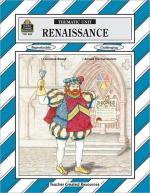|
This section contains 972 words (approx. 4 pages at 300 words per page) |

|
Perennial Problem. Europe was close enough to being a subsistence economy that poverty was a constant presence. Almost no one believed that the elimination of poverty was a sensible social goal. Instead, social policy centered on how to minimize the negative effects of poverty both for its victims and for society at large. There were, in fact, two distinct layers of the poor within European society. Some families and individuals were completely incapable of supporting themselves from farming or wages. Even in the best of times, they had to rely on alms, or charity, to survive. Still others were capable of working but were close enough to the margins of existence that the slightest food shortage would plunge them into crisis. The proportions of both of these groups could be very high. In one city in the late-sixteenth century, it...
|
This section contains 972 words (approx. 4 pages at 300 words per page) |

|




